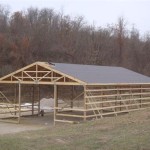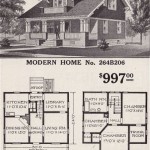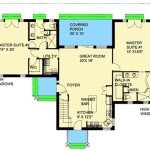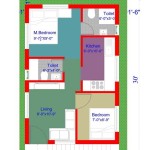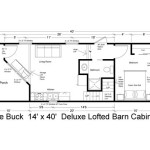Where To Find Free House Plans
Embarking on the journey of building a new home or undertaking a significant renovation project often begins with the search for the perfect house plans. While custom architectural designs provide tailor-made solutions, they can also represent a substantial financial investment. Fortunately, numerous resources exist offering free house plans, providing a cost-effective starting point for realizing your dream home. These plans can serve as inspiration, a base for customization, or even a fully functional design if they align with your needs and local building codes.
The accessibility of free house plans has democratized the building process, allowing homeowners to explore various design options without incurring initial design fees. However, it is crucial to approach these resources with caution and diligence, understanding the limitations and potential drawbacks associated with readily available plans. Scrutinizing the details, verifying compliance with local regulations, and consulting with professionals are essential steps in ensuring the safety and feasibility of any chosen plan.
This article explores the landscape of free house plans, outlining where to find them, highlighting their benefits and limitations, and providing guidance on how to evaluate and utilize them effectively. The aim is to empower individuals with the knowledge necessary to navigate the world of free house plans and make informed decisions when planning their construction projects.
Online Repositories of Free House Plans
The internet has revolutionized access to information, and house plans are no exception. Numerous websites host collections of free house plans, ranging from simple cottages to more elaborate multi-story homes. These online repositories offer a diverse selection of architectural styles and layouts, catering to a wide range of preferences and requirements. However, the quality and completeness of these plans can vary significantly, necessitating careful evaluation before committing to any particular design.
One common type of online repository is the architecture-focused website, often run by architects or design enthusiasts. These platforms may feature a selection of free plans as a way to showcase their skills or generate interest in their paid services. Another source is DIY and home improvement websites, which often offer free plans for smaller projects like sheds, garages, or small additions. These plans are typically geared towards homeowners who are comfortable with basic construction techniques and are looking to take on a smaller-scale project.
Government agencies and non-profit organizations also offer free house plans, particularly for affordable housing projects or disaster relief efforts. These plans are often designed to be efficient, cost-effective, and easy to build, making them a valuable resource for those seeking practical and economical housing solutions. Furthermore, some manufacturers of building materials may offer free house plans as a promotional tool, showcasing how their products can be used in various construction projects. These plans often feature specific materials and construction techniques, potentially limiting design flexibility.
When searching online repositories, it's important to use specific keywords related to your desired style, size, and features. For instance, searching for "free two-bedroom ranch house plans" will yield more targeted results than a generic search for "free house plans." Additionally, pay attention to the website's reputation and credibility. Look for reviews or testimonials from other users to gauge the quality and accuracy of the plans offered. Be wary of websites that appear unprofessional or lack contact information, as they may be hosting outdated or unreliable plans.
Finally, it is crucial to thoroughly review the fine print associated with any free house plan. Some websites may require registration or ask for personal information in exchange for access to the plans. Others may impose restrictions on how the plans can be used, such as prohibiting commercial use or requiring attribution to the original designer. Understanding these terms and conditions is essential to avoid potential legal issues later on.
Evaluating the Quality and Completeness of Free Plans
Once you have identified a potential free house plan, the next step is to evaluate its quality and completeness. Not all free plans are created equal, and some may be lacking essential details or contain errors that could lead to costly mistakes during construction. A comprehensive evaluation process is necessary to ensure that the plan is suitable for your project and compliant with local building codes.
Start by examining the plan's overall layout and design. Does it fit your lifestyle and needs? Are the rooms appropriately sized and configured? Consider the flow of traffic between different areas of the house and whether the layout is conducive to your daily routines. Look for potential challenges or inefficiencies in the design, such as poorly placed bathrooms, cramped hallways, or inadequate storage space. Also, assess the plan's aesthetic appeal and whether it matches your desired architectural style.
Next, scrutinize the technical details of the plan. Check for accurate dimensions, clear labeling of materials, and proper detailing of construction elements. The plan should include detailed floor plans, elevations, sections, and foundation plans. It should also specify the types of materials to be used, the sizes and spacing of framing members, and the locations of electrical and plumbing fixtures. If the plan lacks any of these essential details, it may be incomplete or outdated and should be approached with caution.
Furthermore, verify that the plan complies with local building codes and regulations. Building codes vary from region to region, and it is essential to ensure that the plan meets the specific requirements for your location. This may involve consulting with a local building inspector or a qualified architect or engineer. They can review the plan and identify any areas that need to be modified to comply with local codes. Failure to comply with building codes can result in construction delays, fines, or even the demolition of non-compliant structures.
Another important aspect of evaluating a free house plan is to consider its structural integrity. The plan should be designed to withstand the loads and stresses imposed by weather conditions, seismic activity, and occupancy. This may involve consulting with a structural engineer to assess the plan's structural design and ensure that it is adequate for your location. The engineer can also provide recommendations for reinforcing the structure or modifying the design to improve its stability.
Finally, be aware of the limitations of free house plans. They may not be as detailed or customized as professionally designed plans and may require additional work to adapt them to your specific site conditions and preferences. It is essential to factor in the cost of these additional services when evaluating the overall cost-effectiveness of using a free house plan.
Modifying and Adapting Free Plans
While free house plans can offer a valuable starting point, they often require modification and adaptation to suit individual needs and site conditions. Few free plans will perfectly match all of a homeowner's requirements, necessitating adjustments to the layout, dimensions, or materials. Understanding how to effectively modify and adapt free plans is crucial to achieving a successful building project.
One common reason for modifying a free house plan is to accommodate specific site conditions. The orientation of the house on the lot, the slope of the land, and the presence of trees or other obstacles can all influence the design. For example, a plan designed for a level lot may need to be modified to accommodate a sloping site, requiring the addition of retaining walls or steps. Similarly, the orientation of windows and doors may need to be adjusted to maximize sunlight exposure or minimize exposure to prevailing winds.
Another reason for modifying a free house plan is to personalize the layout and design. Homeowners may want to add or remove rooms, change the size or configuration of existing rooms, or incorporate specific features that reflect their lifestyle and preferences. For example, a homeowner who enjoys cooking may want to enlarge the kitchen or add a pantry. A homeowner who works from home may want to add a dedicated home office. These types of modifications can significantly enhance the functionality and livability of the house.
When modifying a free house plan, it is important to work with qualified professionals, such as architects, engineers, and contractors. They can provide valuable advice and guidance on how to make the necessary changes while ensuring that the plan remains structurally sound and compliant with local building codes. They can also help to identify potential challenges or pitfalls and develop solutions to overcome them.
Before making any modifications, it is essential to thoroughly review the original plan and understand its underlying design principles. This will help you to avoid making changes that could compromise the structural integrity or functionality of the house. It is also important to consider the impact of any modifications on the overall cost of the project. Even seemingly minor changes can have a significant impact on material costs, labor costs, and construction time.
Finally, be sure to document all modifications to the plan and keep accurate records of all changes. This will help to ensure that the construction process goes smoothly and that any future renovations or repairs can be carried out efficiently. It is also important to obtain the necessary permits and approvals from local authorities before starting any construction work. Failure to do so can result in fines, delays, or even legal action.
By carefully evaluating, modifying, and adapting free house plans, homeowners can leverage these resources to create a cost-effective and personalized home design that meets their specific needs and preferences. Remember to prioritize compliance with building codes and structural integrity throughout the entire process, consulting with qualified professionals to ensure a safe and successful project.

180 Best Free House Plans Ideas In 2024 Dream
Free House Plans Blueprints Civiconcepts

Free Plan American Design Concepts Llc

3 Bedroom House Plans Home Designs Nethouseplansnethouseplans

Free Home Plans House Floor

Free Residential Home Floor Plans Evstudio
Free House Plans Blueprints Civiconcepts

Free Modern House Plans Designed By Truoba Architects

10 Free Small Home Plans Thehomesteadingboards Com

Free Small House Plans For Old Remodels Floor Bedroom

